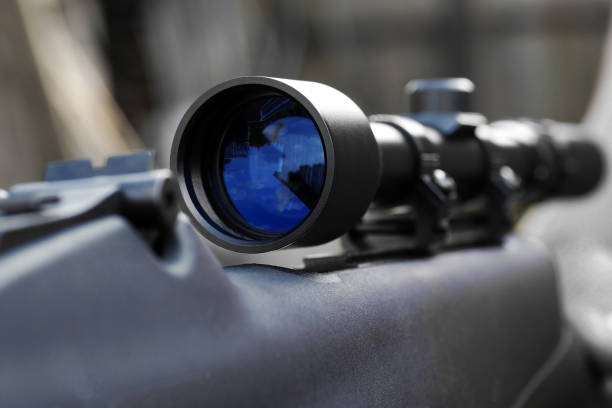Are Scope Mounts Universal? Compatibility Tips
When it comes to setting up a rifle with a scope, one of the most common questions shooters ask is: Are scope mounts universal? The answer isn’t quite straightforward because scope mount compatibility depends on several factors, including the type of firearm, the scope itself, and the mounting system.
Understanding these elements will help you choose the right scope mount and ensure a secure, accurate fit for your shooting needs.

Understanding Scope Mounts
Scope mounts are the hardware that attaches your scope to your firearm. They must securely hold the optic in place and maintain zero through recoil and repeated use. However, not all mounts fit all rifles or scopes, making compatibility a crucial concern.
There are different types of mounts including rings, bases, and rail systems. The specific type needed depends largely on your firearm’s design and the scope’s specifications.
Why Scope Mounts Are Not Always Universal
Differences in Mounting Systems
Rifles come with various mounting platforms, such as Weaver, Picatinny, Dovetail, and proprietary rails. Each system has specific dimensions and grooves that dictate what type of mount you can use.
For example, a Picatinny rail has standardized slots and spacing, making it compatible with many mounts designed for it. In contrast, a Dovetail rail has a different profile and spacing, requiring mounts specifically made for Dovetail.
This means if you try to attach a mount designed for a Picatinny rail onto a Dovetail, it simply won’t fit properly, leading to instability or inability to secure the scope.
Firearm-Specific Mounts
Some firearms have unique mounting systems or require specific bases designed for their models. For instance, rifles like the Ruger Mini-14 use a specific rail interface. If you own a Mini-14 and want to mount a scope, you’ll need the right rail compatible with that model.
For those using a Ruger Mini-14, a common choice is a mini 14 picatinny rail designed precisely to fit the rifle’s receiver, providing a stable base for scope mounts built for Picatinny rails.
Scope Tube Diameter and Ring Size
Scopes come with different tube diameters—most commonly 1 inch or 30 mm. This dimension determines the size of the rings you need to mount the scope.
Even if your mount fits the firearm, if the ring size does not match the scope’s tube diameter, you won’t be able to attach the scope securely.
Height and Eye Relief Considerations
Mount height is another factor that affects compatibility. You need mounts that provide the correct height to clear iron sights, barrels, or other parts of the firearm while still maintaining proper eye relief for comfortable viewing.
Choosing mounts that are too low or too high can make it difficult to achieve a good shooting position and may impact accuracy.
Compatibility Tips for Choosing the Right Scope Mount
1. Identify Your Rifle’s Mounting System
Before purchasing any scope mounts, verify the type of mounting system your rifle uses. Check your firearm’s manual or consult trusted firearm resources to identify whether it has a Picatinny, Weaver, Dovetail, or proprietary rail.
2. Measure Your Scope’s Tube Diameter
Look at your scope’s specifications to determine the tube diameter. This will help you select the correct ring size. Using the wrong size risks damaging the scope or compromising stability.
3. Consider Mount Height
Think about your shooting style and the accessories on your rifle. Will you use iron sights simultaneously? Do you need higher mounts to clear barrels or other attachments? Choose mount height accordingly.
4. Choose Quality Materials
Mounts are subjected to recoil forces and must maintain zero. Opt for mounts made from durable materials like aircraft-grade aluminum or steel. Quality construction ensures longevity and better performance.
5. Match Mounts and Bases
If your rifle requires a base, make sure the mount is compatible with it. Some mounts are designed to fit specific bases or come integrated with bases for certain firearms.
6. Test for Fit and Stability
If possible, test the mounts on your rifle before committing. Proper fitment ensures the scope stays in place and retains accuracy over time.
Why Proper Scope Mount Compatibility Matters
Using the wrong scope mount can lead to numerous problems:
- Loss of Zero: The scope may shift during recoil, causing your shots to stray.
- Damage to Scope or Rifle: Improper mounts can scratch or deform the scope tube or rifle’s rail.
- Uncomfortable Shooting Position: Incorrect height or placement can cause neck strain or eye fatigue.
- Safety Risks: A loosely mounted scope may become a distraction or hazard during shooting.
Ensuring your scope mount is compatible with both your firearm and optic is essential for accuracy, safety, and enjoyment.
Conclusion
Scope mounts are not universal, and compatibility depends on the mounting system of your rifle, the scope tube diameter, and the mount’s design. Understanding these factors helps you select the right mount for a secure and accurate setup.
If you’re mounting a scope on a rifle like the Ruger Mini-14, consider using a mini 14 picatinny rail to ensure you have a stable base designed for that model.
Taking the time to research and choose compatible mounts will enhance your shooting experience by improving accuracy and maintaining the longevity of your equipment. Always prioritize fit and quality when selecting scope mounts to get the best results on the range or in the field.


